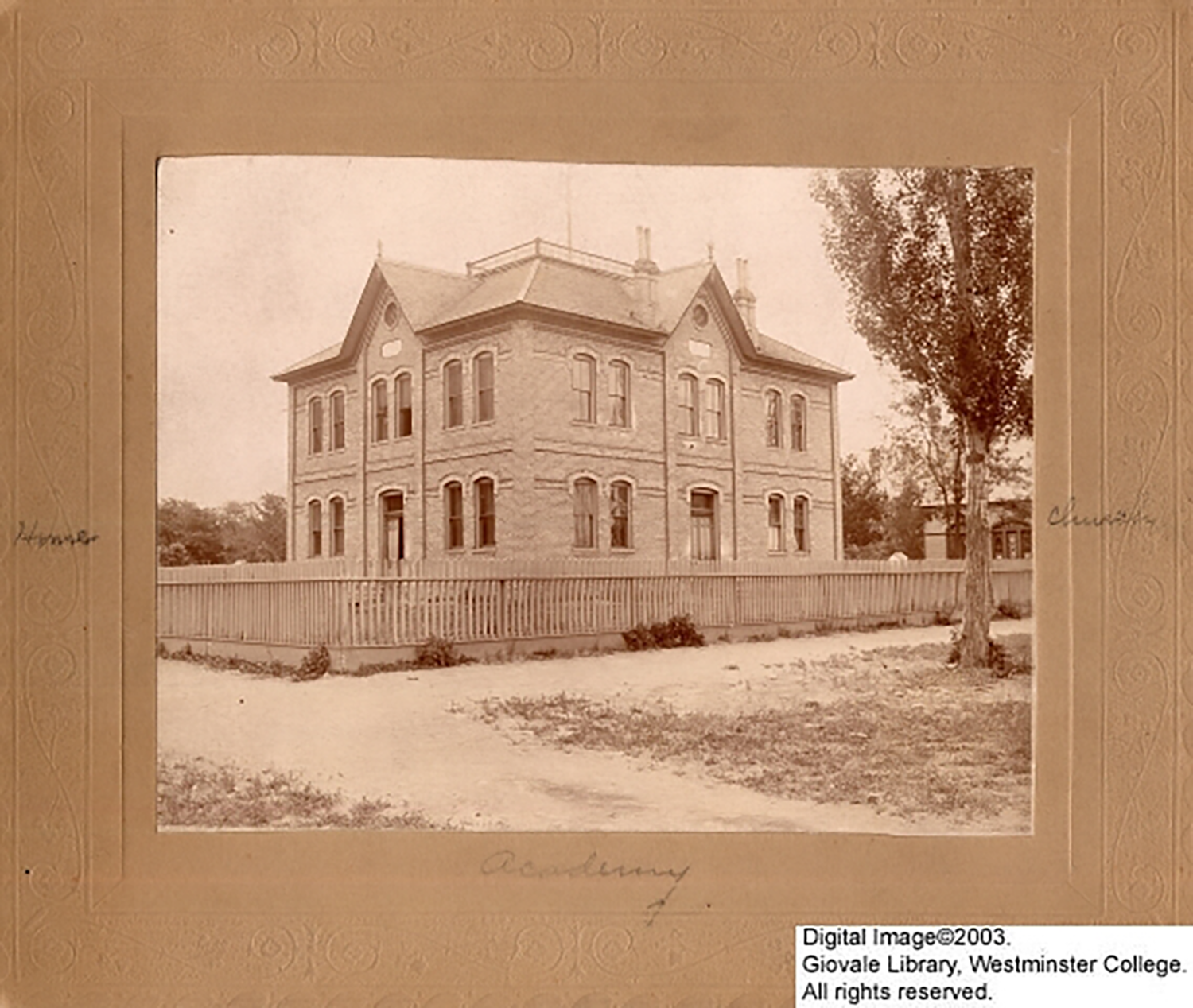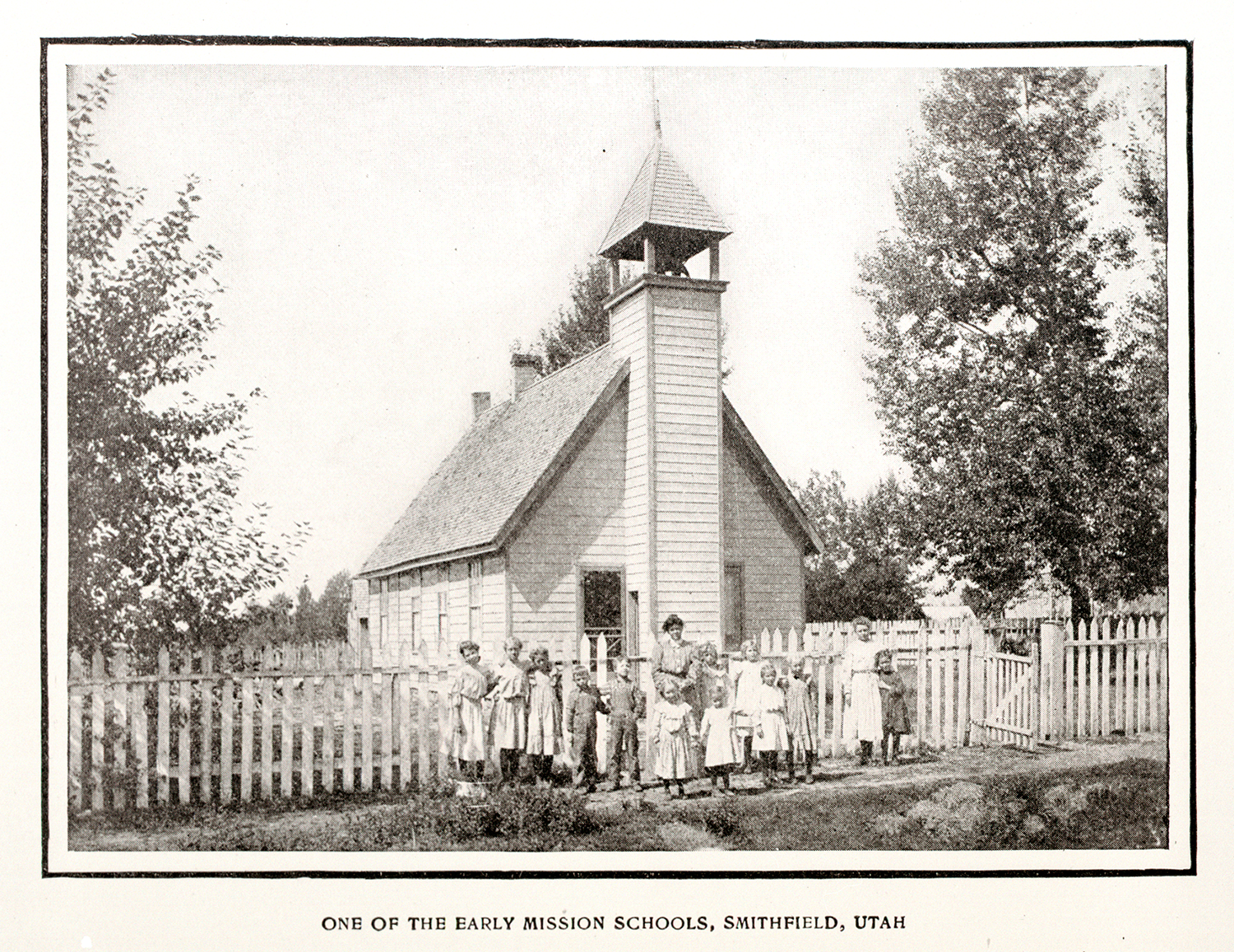
Thumbnail image: One of the early mission schools, Smithfield, Utah; image from Home Mission Monthly, October 1907 edition [Pearl ID:5512].
The history of denominational mission schools is lengthy and has legs in each U.S. state and in countries across the world — so perhaps it comes as no surprise that before there were Presbyterian churches in Utah, there were Presbyterian classrooms.
In the mid- to late-19th century, a plethora of Presbyterian Mission Schools and other educational institutions began to pop up across the state of Utah. Supported largely through the Presbyterian Church’s Women’s Board of Home Missions, these learning environments were founded in areas where people could not be reached by churches or where public schools were not likely to sprout in the next few years. These mission schools reached their height in the 1890s, when their success began a slow and steady decline resulting from the establishment of a state system of education in 1904.
To offer a bit more perspective, 11 schools were established between 1875 and 1879 alone. When the Presbytery of Utah met in the town of Logan in 1880, they agreed to commission 15 female teachers; three years later, the 11 schools had blossomed into 33 in Utah and branching into Idaho.
As the years passed, additional institutions continued to crop up across the state, including Hungerford Academy in Springville; New Jersey Academy in Logan; Wasatch Academy in Mount Pleasant; and Westminster College in Salt Lake City. Of these and the myriad other mission schools that dotted the Utah countryside, only Westminster and Wasatch remain.
HUNGERFORD ACADEMY — SPRINGVILLE
Hungerford Academy was in operation for just under four decades. It served the Springville community for 36 years, from its establishment in 1877 by the Rev. George Leonard until 1913, when the institution closed its doors and merged its staff and students with that of Wasatch Academy in Mount Pleasant.
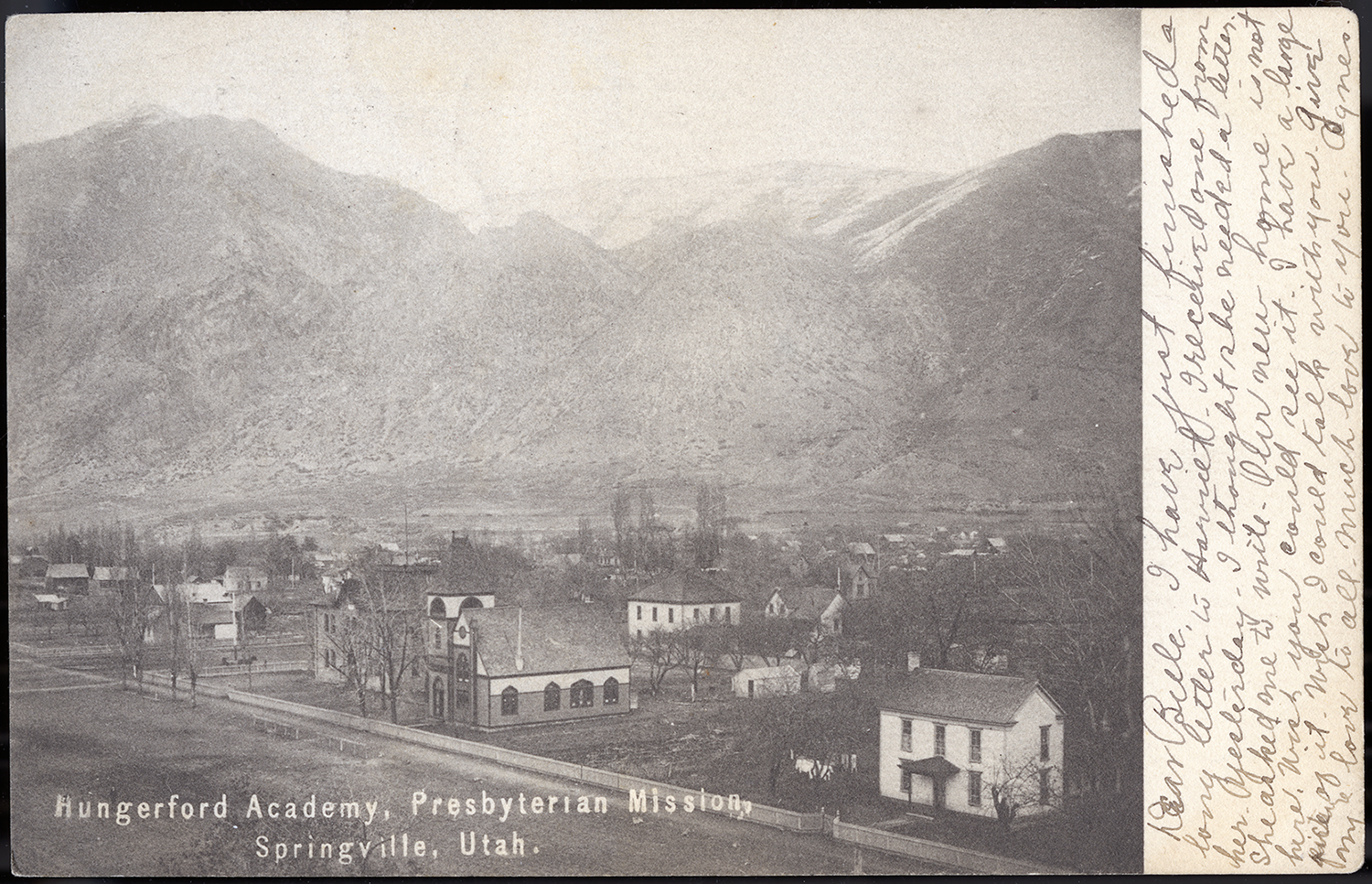
Hungerford Academy, Presbyterian Mission. Springville, Utah, 1906 [Pearl ID:14171].
The church building, the cornerstone of which was placed in 1892, was constructed just south of the school building and is listed on the National Register of Historical Places. The plaque that sits at the front of the property tells us that Hungerford, at the time of the church’s construction, was “the only school then providing education from elementary grades through high school for all denominations.”
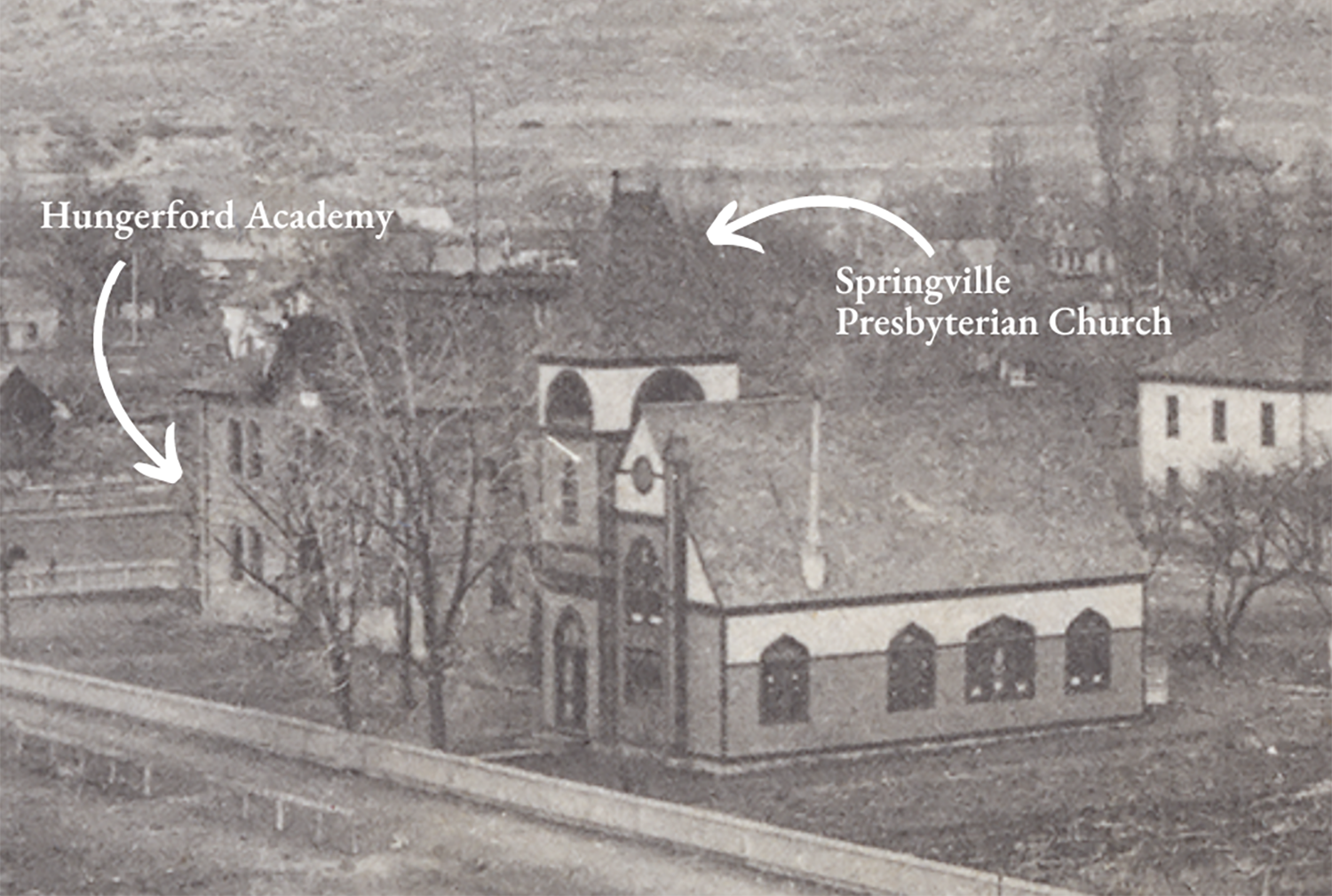
The nomination form for the church offers us some architectural history of the building:
“This small, compact wooden church in modified late Gothic Revival style has a Romanesque Revival bell tower, high pitched roof and chimney. … The transom windows with their pointed arches are filled with stained glass in floral and geometric designs. The rose window is a memorial to Reverend George Leonard and one of the south windows is dedicated to the memory of an early convert, Tobias Dallin.”
Additionally, the “Statement of Significance” portion of the document serves as a source of context for Hungerford Academy. Originally, Rev. Leonard welcomed his pupils into his rented two-room adobe house — their first classroom. The first principal of the school was the Rev. J.A. Livingston Smith, who served his first term from 1887 to 1893 and a second from that year until 1902.
Alongside the other Presbyterian mission schools that had been established across Utah, Hungerford helped serve as a catalyst for the creation of a state-funded public school system. Once this was established, and as the public schools began sprouting up and meeting the needs of the intermountain communities, the success of the Presbyterian-based schools began to decline. In 1913, Hungerford Academy was dissolved, its remaining pieces merging with Wasatch Academy in Mount Pleasant.
NEW JERSEY ACADEMY — LOGAN
In September 1878, the Rev. Calvin Parks opened the doors of his new school — the Cache Village Seminary. Two years later, upon receipt of a gracious contribution for a new building, the Seminary was renamed the New Jersey Academy. As was custom, this new title was directly inspired by the institution’s donors, the Women’s Synodical Society of New Jersey. In 1893, 150 students were enrolled in classes at the Academy.
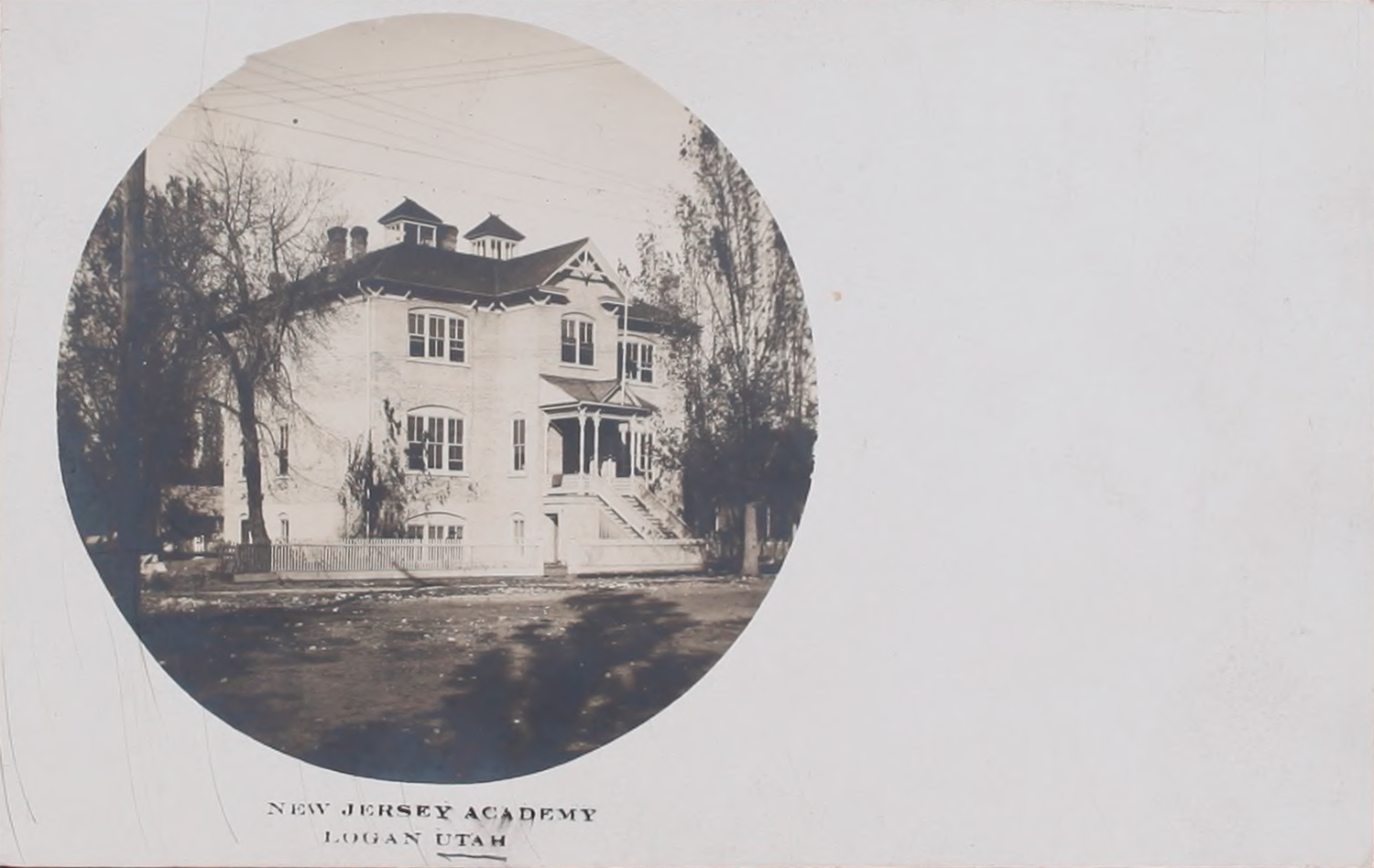
New Jersey Academy, Logan, Utah, 1877 [Pearl ID:103397].
The curriculum included Bible courses, Latin language classes and more. In 1911, the Academy, founded initially as a day school for boys and girls, was morphed into a boarding school as well. At this point, domestic science lessons were added to the curriculum.

Toward the bottom of the front page of the Sept. 7, 1912, edition of The Logan Republican is the headline, “N.J. Academy Ready for Work.” An announcement of the school’s opening for its 35th year, the article is brief but insightful. It consists of a list of the various “pros” to enrolling at the Academy, including smaller, more intimate classroom settings, a closer student-teacher relationship, and the quiet and attractive grounds surrounding the building — as well as a nod toward the burgeoning public schools in the area.
Many of these Presbyterian-led educational institutions were founded with the knowledge that, once public schools began to appear and a state-funded program was established, the need for them would lessen. This concept is reiterated in this article, which says that “The Academy is not a rival of the public schools or other educational institutions, and is in full sympathy with all organized effort to promote sound learning.”
By 1918, the Academy was no longer accepting boys as day students; the school had finished its transition into a girls-only boarding school, just in time for the rest of society to turn its efforts toward co-education.
Despite a second name change — in 1925, the New Jersey Academy became the Logan Academy — Rev. Parks’ institution was seeing a continued drop in enrollment numbers. The faculty and staff held on throughout the ’20s and early ’30s, but despite their efforts, the doors of Logan Academy were permanently closed in 1934.
However, the legacy of its founder and the Presbyterian faith that pushed him to establish the Cache Village Seminary continued to impact students as the Academy merged with another school — Wasatch Academy in Mount Pleasant.
Read more about the New Jersey Academy and other early Presbyterian churches in Logan
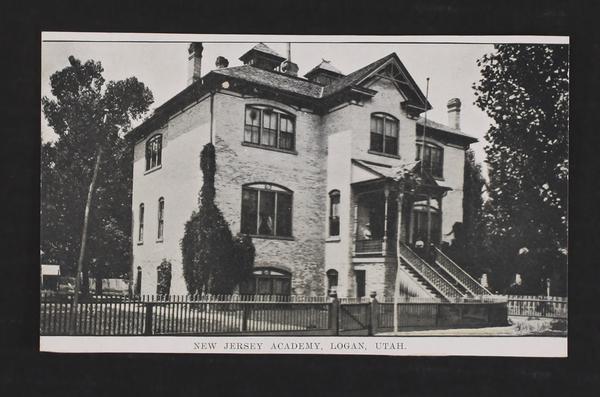
New Jersey Academy, Logan, Utah, 1877 [Pearl ID:103554]
WASATCH ACADEMY — MOUNT PLEASANT
In 1875, a young Presbyterian minister arrived in Sanpete County, Utah, at the encouragement of Sheldon Jackson, a prominent reverend and missionary himself. The young man — Duncan McMillan was his name— worked to establish a school for children of the 30 or so apostate Mormon families living in the town of Mount Pleasant, and in April of that year, he succeeded. By the end of the first term, Wasatch Academy had over 100 enrolled students.
McMillan quickly felt the financial burden of opening an education institution like this — when he was unable to support it himself, he reached out to the Presbyterian Church in Salt Lake City for help. The deed for the school’s building was transferring to the trustees of the church, and McMillan let out a sigh of relief before turning around and hiring himself a staff.
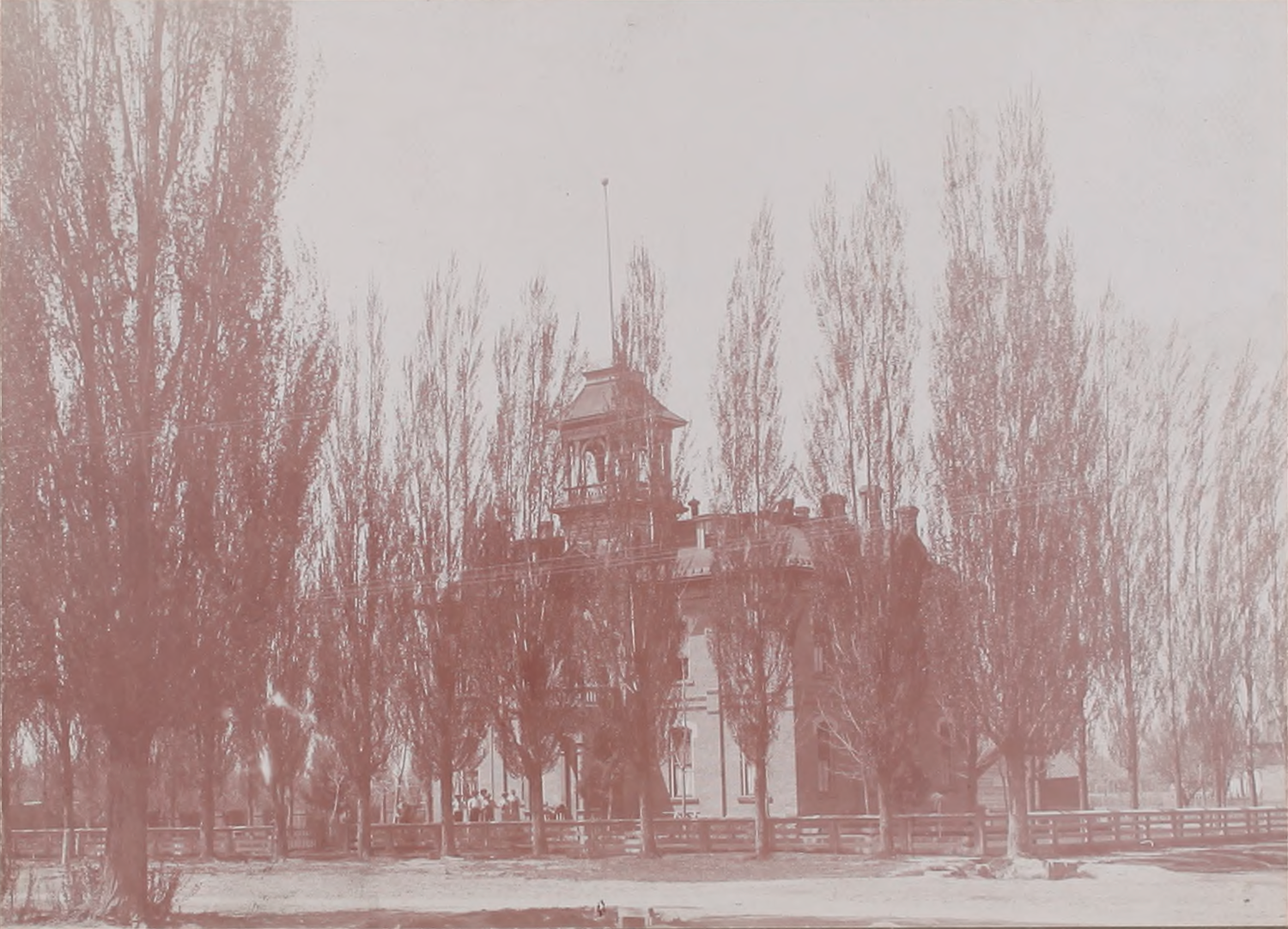
Wasatch Academy, Mt. Pleasant, Utah, 1877 [Pearl ID:103553].
In its earliest years, Wasatch Academy served as a grade school for the neighborhood children. By 1887, just 12 years after its founding, the school had reached great heights — the curricula included classes in rhetoric, math, history, physiology, bookkeeping, Latin and physics. The Academy’s continual growth led to the construction of a boarding unit, so that students from other towns could attend. More buildings were added to the grounds; principals came and went; and in 1912, with the establishment of a public educational system, the Academy changed its direction, becoming a college preparatory school.
It remains as such to this day — though the institutions’ goals and foci have changed since McMillan walked its grounds. The Academy is still administered by the Presbyterian Church, but its purpose is no longer to provide an alternative to Mormon culture, or to cater specifically to the children of apostate Mormon families. And still, the school lives on, its persistence an echo of the words of its founder, who is quoted as saying, “Let it endure like the Wasatch Mountains … call it Wasatch Academy.”
Learn more about Wasatch Academy and its history
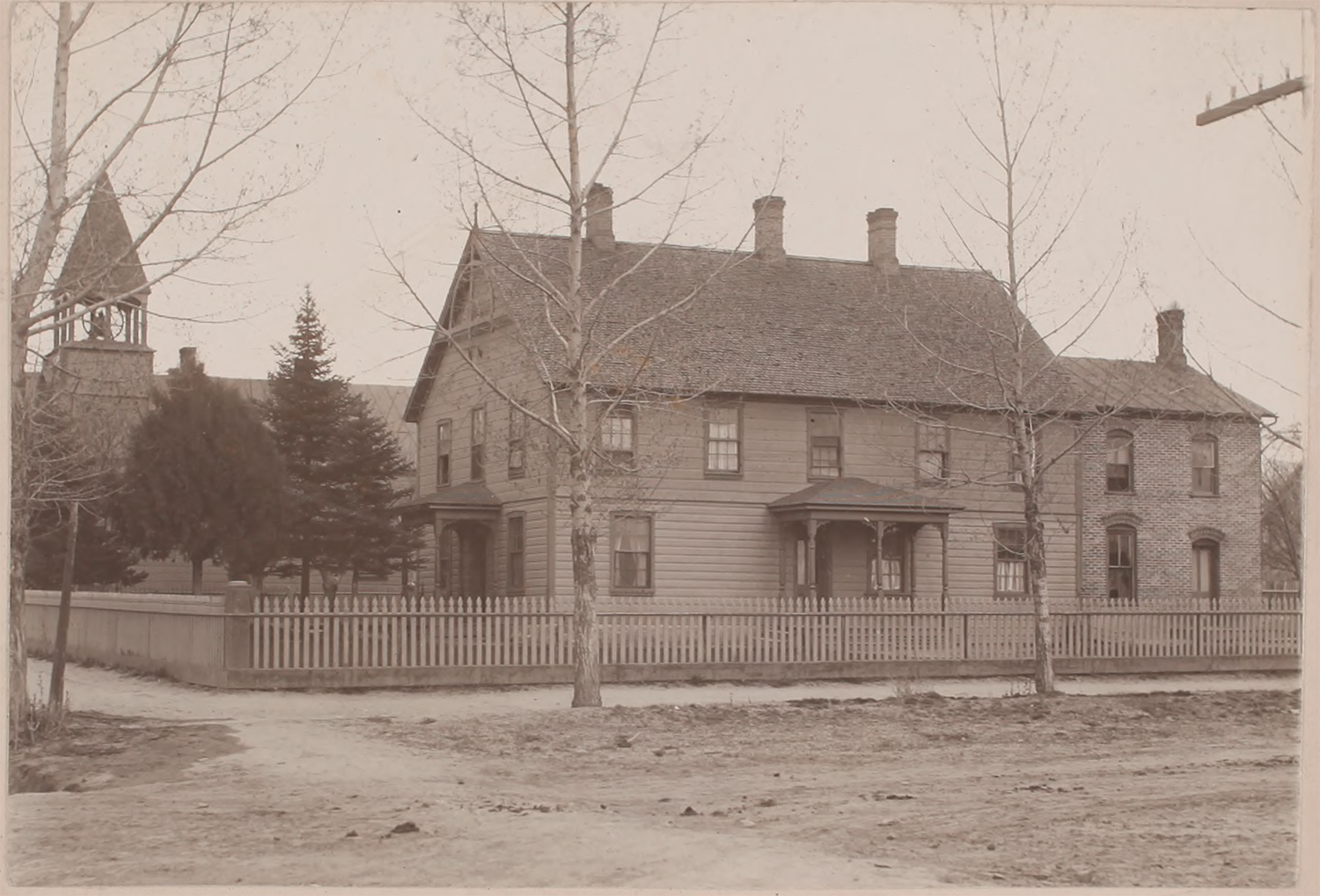
The Girls' Home and Chapel. Wasatch Academy, Mt. Pleasant, Utah, 1877 [Pearl ID:103464].
WESTMINSTER COLLEGE — SALT LAKE CITY
Westminster College and Wasatch Academy shared a few similarities: they were founded the same year, they were supervised and overseen by the Presbyterian Church, and both were preparatory schools (with Wasatch becoming one officially in 1912). When it first opened in 1875, Westminster was known as the Salt Lake Collegiate Institute, and it welcomed 63 students through the thresholds of the three rooms in the old church building where classes were conducted. The school’s founder — who doubled as its first instructor, too — was Dr. John M. Coyer. The institution celebrated its first class of graduating high school students in 1882.
Twenty-seven years after its establishment, Salt Lake Collegiate became Sheldon Jackson College, renamed in deference to its primary benefactor, and began welcoming post-secondary students through its doors. Prior to Jackson’s generous donation of $50,000, the school had been suffering — often, the staff and faculty were paid in goods and groceries.
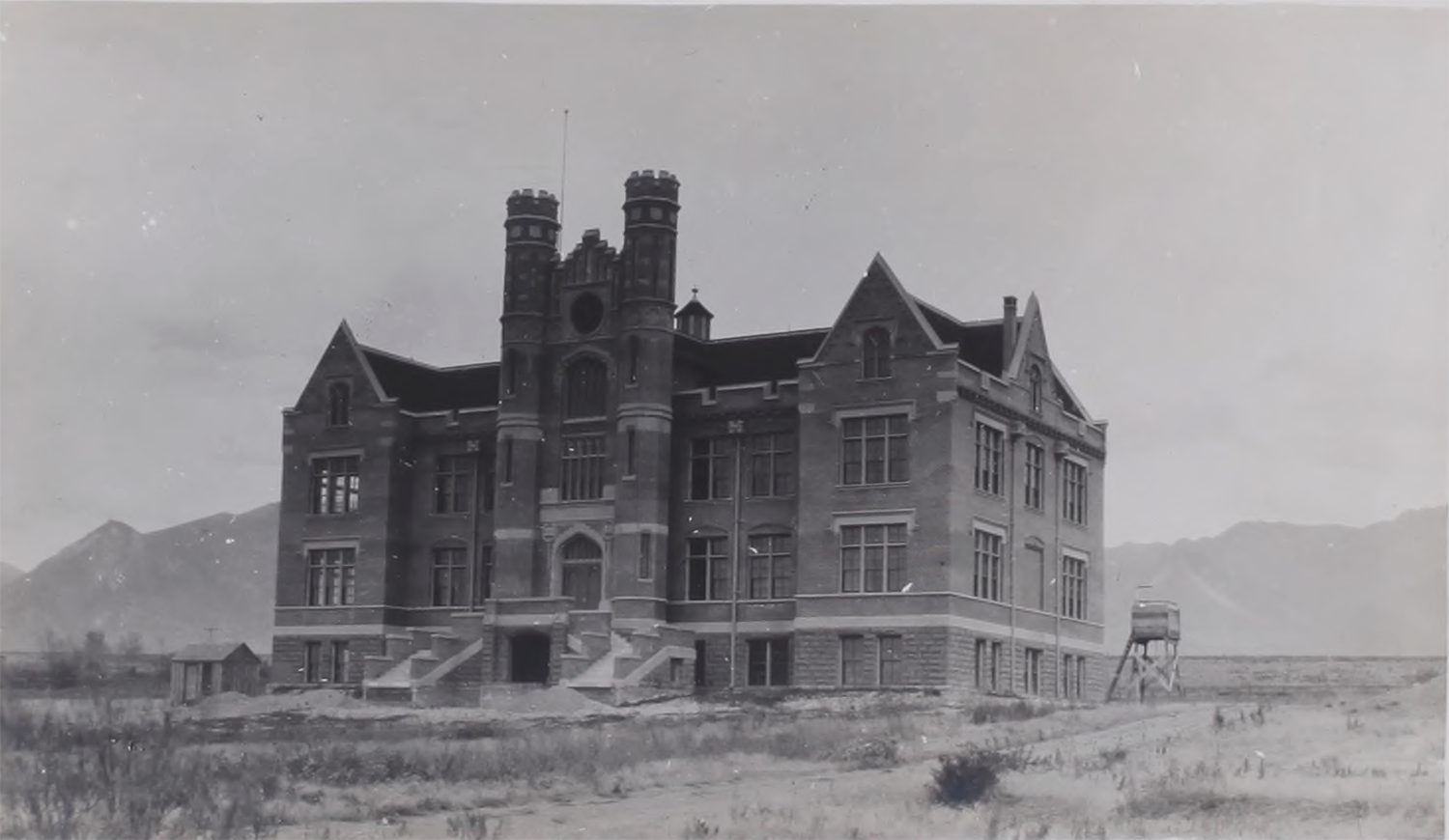
Converse Hall, Westminster College, Salt Lake City, Utah, 1877 [Pearl ID:103610].
Under the supervision of the First Presbyterian Church of Salt Lake City, the institution underwent its final name change in 1902 — “Westminster College” was chosen because it better reflected the general Protestant education being offered there. The next few decades saw curricula removed and reinstated, with low enrollment levels leading to the suspension of college-level courses for five years beginning in 1909. Through two World Wars, through the Great Depression, through it all, Westminster College remained.
After 1945, high school classes were no longer offered; that same year, Westminster became the first accredited two-year junior college in the Intermountain area. It would transform once more into a four-year liberal arts university in 1949, the increased enrollment resulting from the G.I. Bill’s influence bringing more attention to the school.
In 1974, the Presbyterian Church formally ended its ownership of the institution. The school’s seal had originally been emblazoned with the phrase “Pro Christo et Libertate,” meaning “For Christ and Liberty.” In 2019, the school’s leadership adopted a new seal that reads “Discendo Vita Abundantior,” or “Life Made More Abundant by Learning.”
Westminster University is an active and flourishing academic institution today. The present campus consists of 14 major buildings sitting on 27 acres of land in the Sugar House district.
Read more about the history of Westminster University
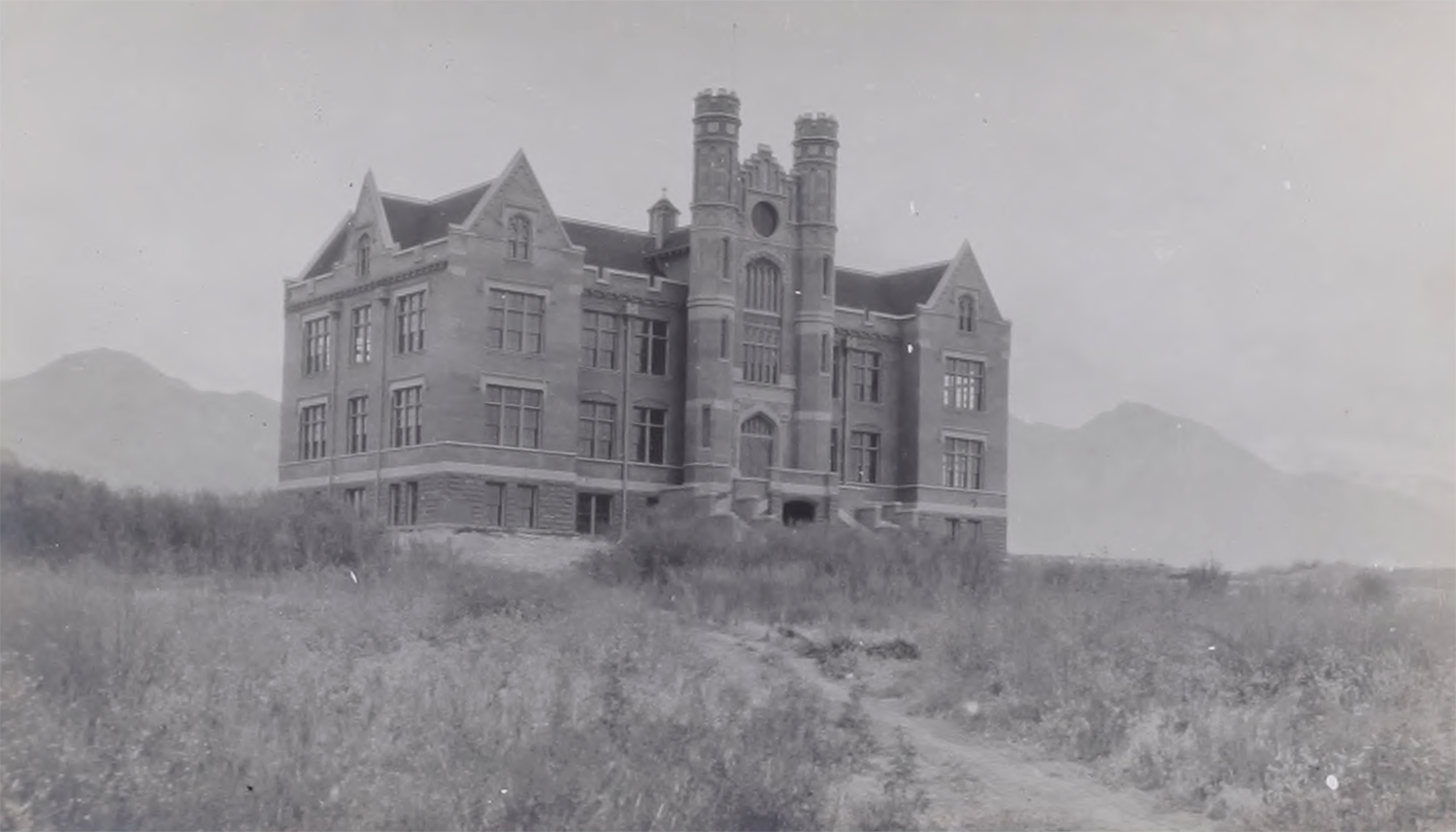
Converse Hall, Westminster College, Salt Lake City, Utah, 1877 [Pearl ID:103607].

